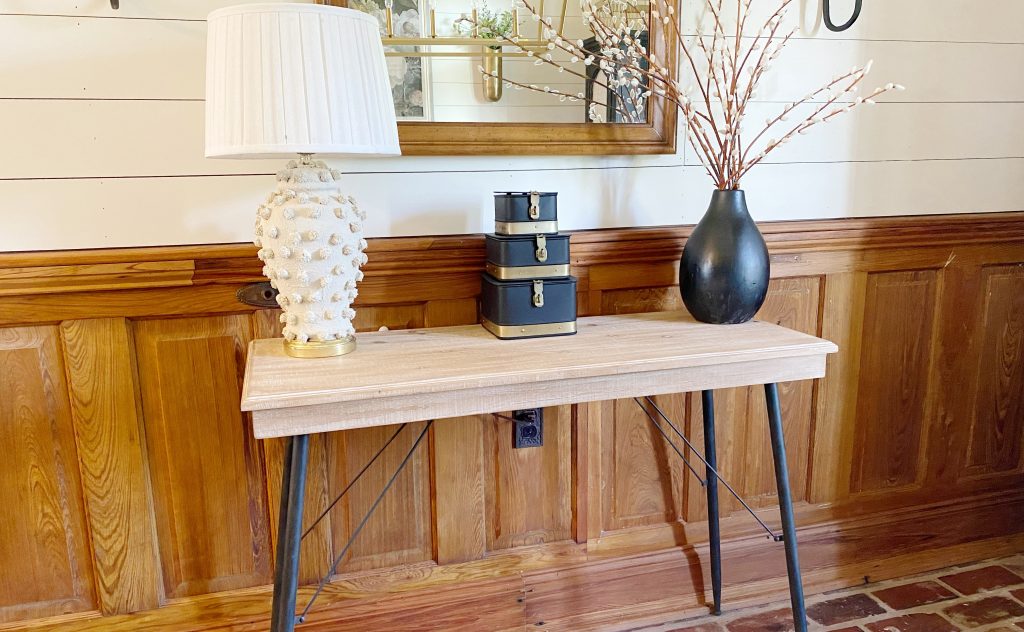How to make your farmhouse tabletop decor “WOW” in 2023
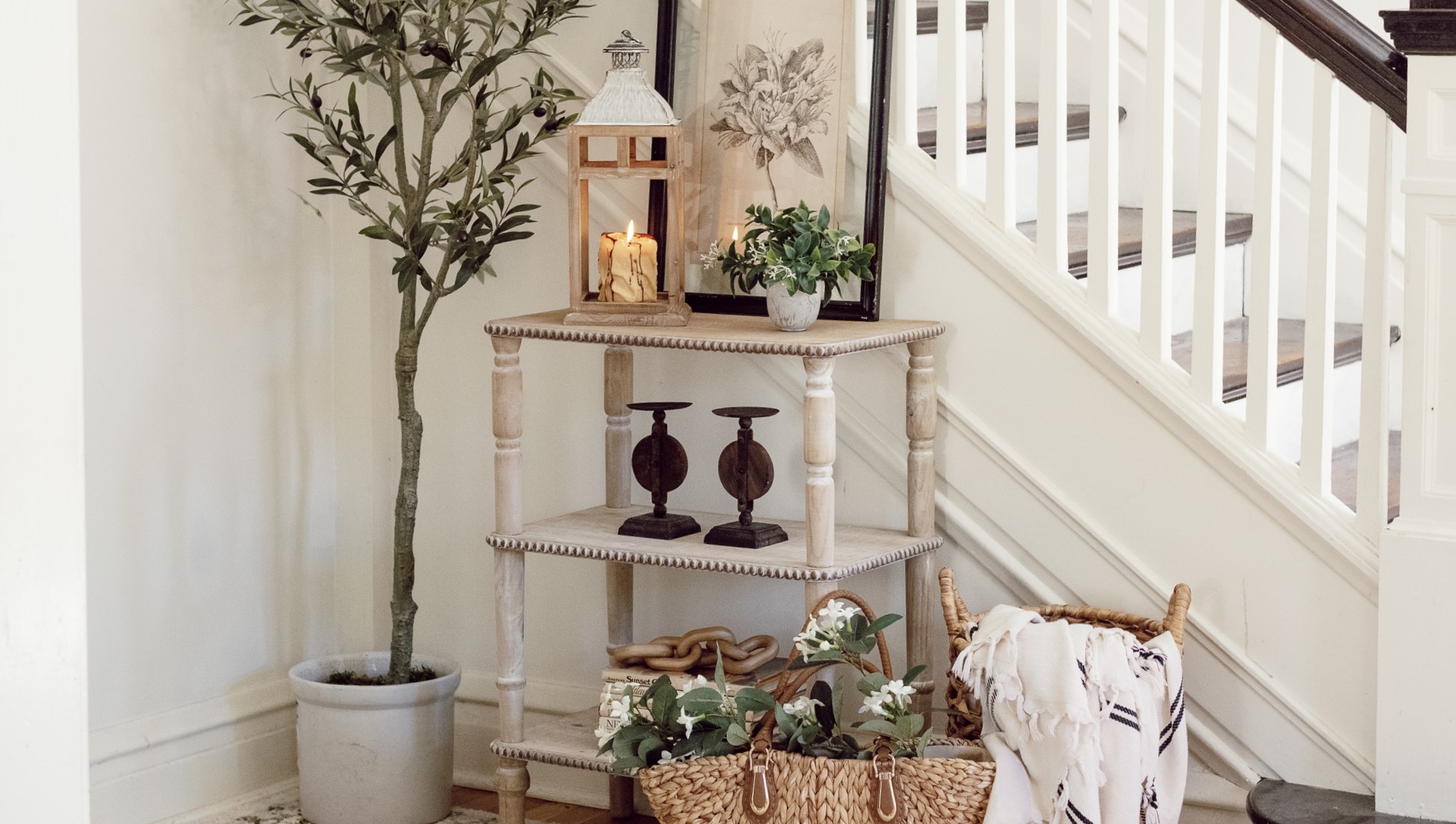
A well-decorated tabletop can add a touch of elegance and personality to any room in your home. Whether you’re looking to spruce up your dining room table, coffee table, bedside table, or any other type of tabletop, there are several ways to achieve a stylish and cohesive look that reflects your personal style. In this article, we’ll explore some of the best ways to make your farmhouse tabletop decor “WOW” throughout your home, including the use of colors, textures, patterns, and accessories.
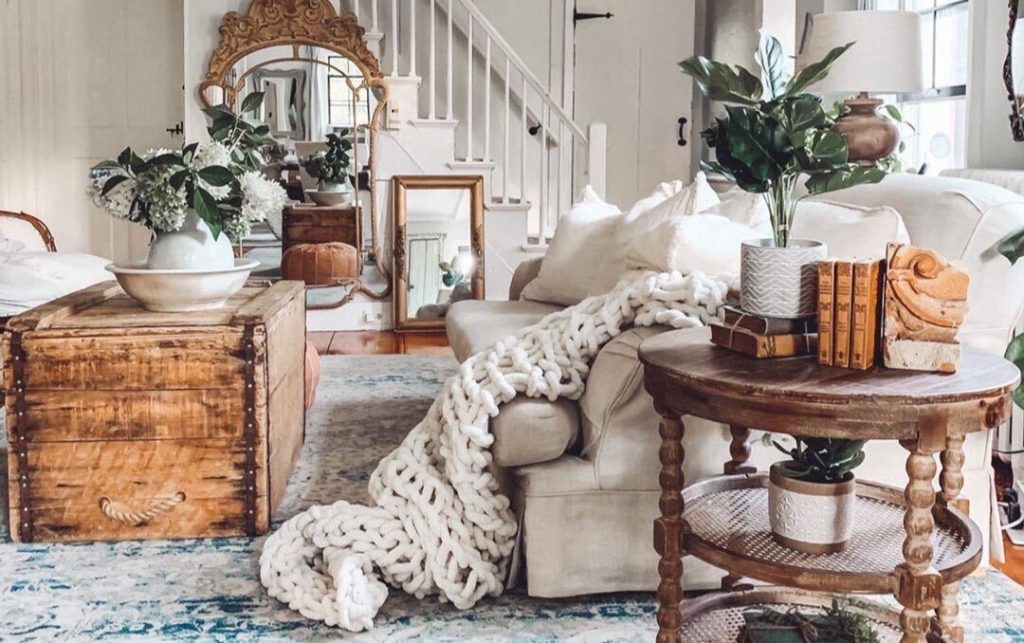
French Cane Shelf Side Table
Choose a Color Scheme
One of the most important aspects of tabletop decorating is choosing a color scheme. The colors you choose should complement the room’s existing decor and reflect your personal taste. If you’re unsure where to start, consider using a color wheel to help you identify complementary or contrasting colors that work well together. For example, if your room has a neutral color palette, adding pops of bright colors, such as red or yellow, can create an eye-catching focal point.
When it comes to color schemes for tabletop decor, there are a few different approaches you can take. One popular option is to stick with a monochromatic color scheme, which involves using different shades and tones of a single color. This can create a serene and cohesive look that’s easy on the eyes. Another approach is to use complementary colors, which are colors that are opposite each other on the color wheel, such as blue and orange or purple and yellow. Using complementary colors can create a bold and dynamic look, but it’s important to use them sparingly so they don’t overwhelm the space. Yet another approach is to use analogous colors, which are colors that are adjacent to each other on the color wheel, such as blue, green, and yellow. This can create a harmonious and calming look that’s perfect for a bedroom or living room.
Add Texture to your Tabletop Decor
Texture can add depth and interest to any tabletop. Use a variety of materials, such as wood, metal, glass, or ceramics, to create a layered look. You can also incorporate natural elements, such as plants or flowers, to add texture and create a sense of freshness.
Textures can add depth and interest to your tabletop decor, and there are a variety of textures you can incorporate. For example, you might use a rough-hewn wooden bowl, a sleek metal tray, a smooth ceramic vase, and a fluffy faux fur throw all on the same table. This creates a variety of tactile experiences for the eye and hand, and can make the space feel more layered and interesting.
Mix and Match Patterns
Don’t be afraid to mix and match patterns when decorating your tabletop. Patterns can add visual interest and create a cohesive look when used correctly. When mixing patterns, make sure to choose patterns that share a common color or style, so they don’t clash.
When it comes to patterns, there are a few guidelines you can follow to mix and match effectively. One important rule is to vary the scale of your patterns. For example, you might use a large-scale floral pattern on a pillow, a medium-scale geometric pattern on a throw, and a small-scale polka dot pattern on a vase. This creates visual interest without overwhelming the space. Another rule is to use patterns that share a common color or style. For example, you might use a black-and-white stripe pattern on a pillow and a black-and-white polka dot pattern on a vase, since both patterns are black and white and have a graphic, modern feel.
Use Accessories
Accessories can add personality and style to any tabletop. Consider using items like candles, vases, picture frames, or decorative bowls to add interest to your tabletop. You can also add functional items like coasters or trivets to create a more practical and organized look.
Accessories are a key element of tabletop decor, and there are many different types of accessories you can use. Some popular options include candles, picture frames, decorative bowls, and books. When choosing accessories, it’s important to consider their scale and style. For example, if you have a small coffee table, you might choose a few small, delicate accessories that won’t overwhelm the space. Alternatively, if you have a large dining table, you might choose a few large, sculptural accessories that will make a statement.
Create a Focal Point amongst your Tabletop Decor
Creating a focal point on your tabletop can draw the eye and make a statement. Consider using a centerpiece, such as a vase of flowers or a decorative bowl, to create a focal point. You can also use a bold accessory or piece of artwork to draw attention to your tabletop.
Focal points can create a visual anchor for your tabletop decor, and there are many different types of focal points you can use. One popular option is to use a large vase of flowers or a potted plant as a centerpiece. This creates a natural focal point that draws the eye and adds color and life to the space. Another option is to use a piece of artwork or a sculpture as a focal point. This can add a sense of personality and style to the space, and can also create a conversation starter for guests.
Use Height and Layers
Using height and layers can create visual interest and depth on your tabletop. You can use items like candlesticks or tall vases to add height, while using a mix of accessories and textures to create layers. When layering, start with larger items and gradually add smaller items to create a cohesive look.
Height and layering are key elements of tabletop decor that can add visual interest and depth. When using height, it’s important to vary the height of your accessories so they don’t all sit at the same level. For example, you might use a tall vase, a medium-height candlestick, and a small dish all on the same table. When layering, it’s important to start with the largest items first and gradually add smaller items on top. This creates a sense of depth and dimension that’s visually appealing.
Consider Proportions
When decorating your tabletop, consider the proportions of the items you’re using. For example, if you have a small coffee table, don’t use large accessories that overwhelm the space. Instead, use smaller items that complement the size of the table.
Proportions are an important consideration when decorating your tabletop. If you have a small table, it’s best to use smaller accessories that won’t overwhelm the space. If you have a large table, you can use larger accessories that will make a statement. It’s also important to consider the proportions of the accessories themselves. For example, if you’re using a vase as a centerpiece, it’s important to choose a vase that’s in proportion to the size of the table and the other accessories on it. A small vase might get lost on a large table, while a large vase might overwhelm a small table.
Choose the Best Materials
When it comes to choosing materials for your tabletop decor, there are many different options to consider. Some popular choices include wood, metal, glass, ceramics, and natural materials like stone and woven fibers. It’s important to choose materials that work well together and complement the style of your space. For example, if you have a rustic farmhouse-style kitchen, you might choose wood and metal accessories, while if you have a modern minimalist living room, you might choose sleek glass and metal accessories.
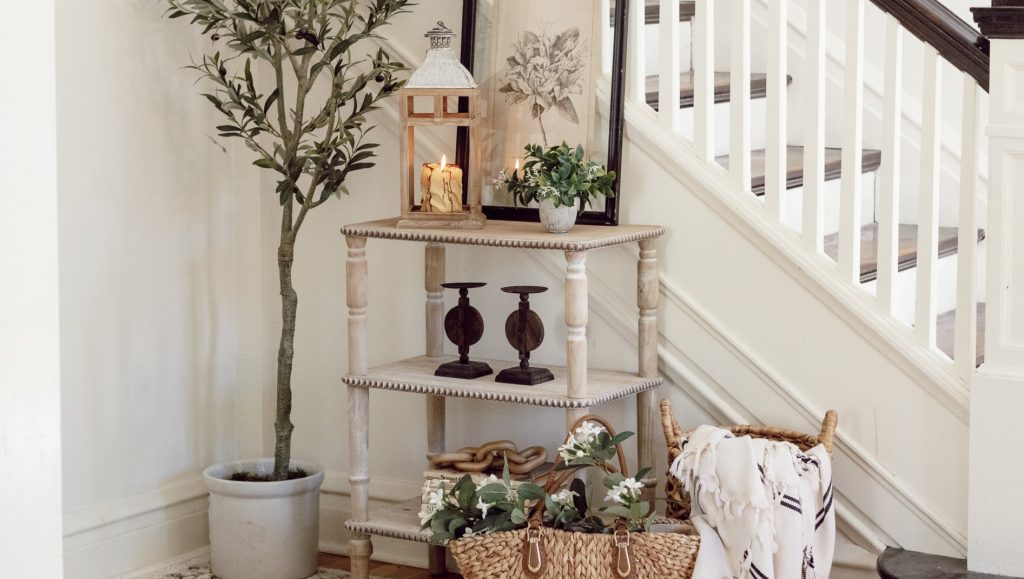
Three-Tier Beaded Edge Whitewashed Table
Change up your Tabletop Decor
Finally, don’t be afraid to change up your tabletop decor from time to time. Switching out accessories or changing your color scheme can give your room a fresh and updated look. Additionally, seasonal decor can add a festive touch to your tabletop throughout the year.
One way to add interest to your tabletop decor is to mix and match different styles and eras. For example, you might use a vintage ceramic pitcher alongside a modern metal tray, or mix mid-century modern and bohemian accessories on the same table. This creates a curated, eclectic look that’s visually interesting and unique.
Another way to add interest to your tabletop decor is to incorporate seasonal elements. For example, in the fall you might use a vase of autumnal flowers, a bowl of decorative gourds, and a cozy plaid throw. In the winter you might use a candle centerpiece, a bowl of pinecones, and a faux fur runner. Incorporating seasonal elements can help your decor feel fresh and relevant throughout the year.
Consider functionality
it’s important to consider the function of your tabletop decor. While aesthetics are certainly important, it’s also important to make sure that your decor is practical and functional for your needs. For example, if you have young children or pets, you might want to avoid using fragile or breakable accessories on your tabletops. If you frequently use your dining table for meals and entertaining, you might want to choose decor that’s easy to move and won’t interfere with serving and eating.
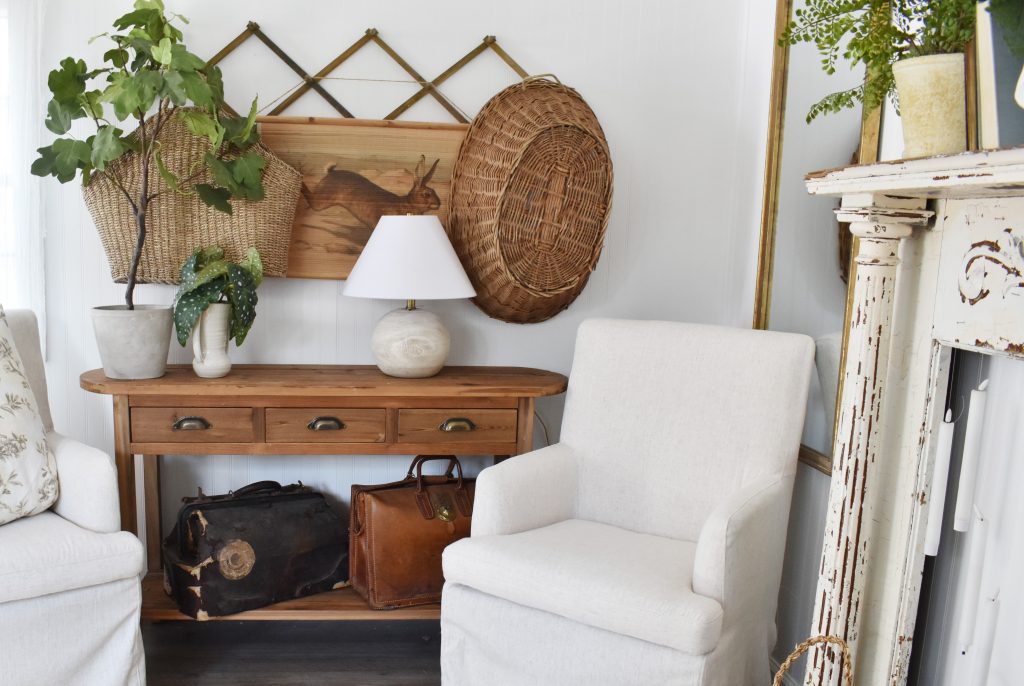
Natural Wood Console Table, Weathered with Drawers
In conclusion, decorating your tabletop can add personality and style to any room in your home. By using a mix of colors, textures, patterns, and accessories, you can create a cohesive and visually interesting look that reflects your personal taste. Remember to consider proportions, avoid overdoing it, and don’t be afraid to change things up from time to time. With these tips, you can create a stylish and functional tabletop that enhances your home’s decor.
